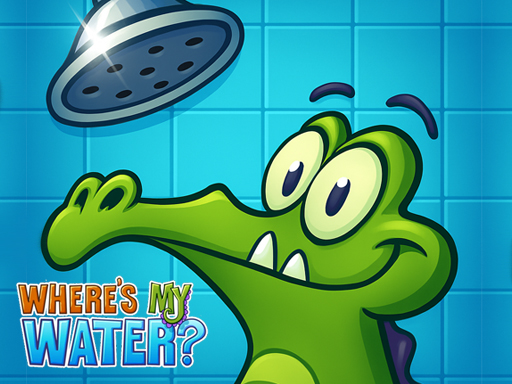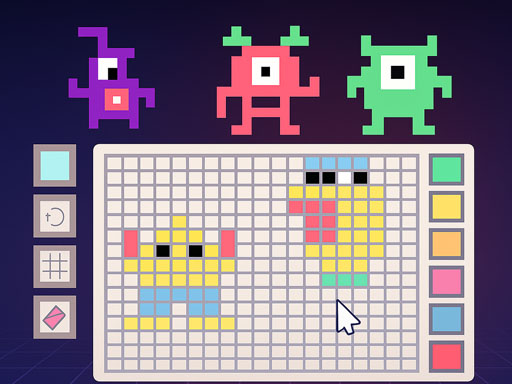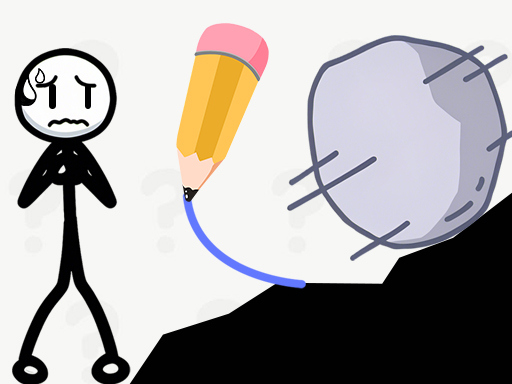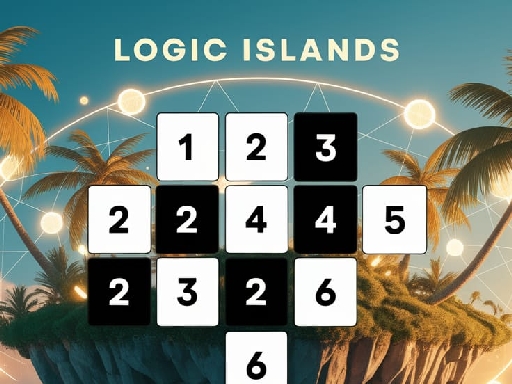Connect The World
About Connect The World
Okay, so listen, I’ve stumbled upon something absolutely incredible, and I genuinely cannot wait to tell you about it. You know how I’m always on the hunt for those games that just *click*? The ones that grab you from the first minute and don't let go, the ones that make you lose track of time in the best possible way? Well, I found one. It’s called Connect The World, and honestly, it’s completely blown me away.
When I first heard about it, I was a little skeptical, I’ll admit. Another quiz game? I’ve played a million of those, right? But there’s something genuinely magical about Connect The World that elevates it far beyond just trivia. It’s not just a game; it’s an experience, a vibrant, fast-paced adventure that somehow manages to make learning feel like the most thrilling challenge you’ve ever faced. I mean, who knew geography could be this addictive?
You fire it up, and right away, you’re hit with this incredibly clean, colorful interface. It’s not cluttered, not overwhelming; it’s just inviting. And then it starts. You’re presented with a stark, minimalist outline of a country, floating against a beautiful, often gradient background. No labels, no names, just the pure, unadulterated shape. And below it, a few multiple-choice options. That’s it. Simple, right? But oh my god, the tension that builds in that split second! Your brain just *snaps* into gear. You’re staring at this shape, and you can almost feel the gears turning in your head, sifting through all those half-forgotten lessons from school, all those maps you’ve glanced at over the years.
What I love about games like this is how they trick you into learning without it ever feeling like homework. You’re not trying to memorize facts; you’re building a visual library, an intuitive understanding of the world’s geography. There’s something so incredibly satisfying about seeing that distinctive boot of Italy, or the sprawling mass of Russia, or the familiar, jagged coast of Norway, and just *knowing* it. That moment of recognition, that little spark of "Aha!" – it’s pure dopamine. And then you tap the correct answer, and there’s this wonderful, satisfying little chime, and the name of the country appears, confirming your genius. Or, sometimes, your utter bewilderment, which is also part of the fun, honestly.
The game really shines when you start getting into the rhythm. You pick your difficulty, which is a brilliant touch. If you’re just dipping your toes in, you can go for an easier mode where the outlines might be a bit more distinct, or perhaps the choices are a little less tricky. But then you ramp it up, and that’s where the real challenge, and the real thrill, comes in. The clock starts ticking faster, the outlines become more obscure, sometimes zoomed in or rotated in ways that really test your visual smarts. You’ll find yourself leaning forward, eyes narrowed, almost willing your brain to conjure the answer.
I’ve always been drawn to games that demand quick thinking and pattern recognition, and Connect The World absolutely nails it. It’s like a puzzle game, but instead of fitting blocks together, you’re fitting abstract shapes to mental concepts. The pace is exhilarating. You get one right, and immediately, the next outline pops up. It’s a relentless, wonderful assault on your geographical knowledge. You’re not just trying to get the right answer; you’re racing against yourself, trying to beat your previous score, trying to shave milliseconds off your reaction time. That feeling when you hit a streak, just flowing from one correct answer to the next, your fingers flying across the screen almost instinctively – it’s a high, I tell you. You can almost feel the tension in your shoulders during those intense moments, followed by the sweet release of nailing a perfect combo.
The brilliant thing about this is how subtly it teaches you. You might start off struggling with the smaller, less distinct countries, or those landlocked nations that all seem to blend together. But the more you play, the more those shapes start to etch themselves into your memory. You begin to notice little quirks, little indentations, or projections that become your mental anchors. "Oh, that’s the one with the little panhandle!" or "That’s the one that looks like a chicken!" You develop these personal mnemonics, and suddenly, countries you’d never given a second thought to become instantly recognizable. It’s a testament to clever game design when a game can make you genuinely curious about the world around you.
There are moments, of course, when you just freeze. You stare at an outline, and your mind goes completely blank. You know you’ve seen it before, you *know* it’s in there somewhere, but it just won’t come. The timer ticks down, a gentle, insistent reminder of your impending failure, and you have to make a panicked guess. Sometimes you get lucky, sometimes you don’t. But even those moments of frustration are part of the charm, because they make the victories so much sweeter. They make you want to go back, to practice, to conquer that elusive shape next time.
What’s fascinating is how your brain starts to build these mental maps. You’ll find yourself unconsciously grouping countries, thinking about their neighbors, their relative sizes. You’re not just guessing a single country; you’re engaging with the entire global tapestry. And the vibrant colors they use for the backgrounds and the outlines themselves? They’re not just decorative; they add to the sensory experience, making each new challenge feel fresh and visually appealing. It’s a feast for the eyes as much as it is a workout for the brain.
In my experience, the best moments come when you’re so absorbed that the outside world just fades away. I’ve lost hours to this game, genuinely hours, thinking it’s only been a few minutes. You get into this flow state where it’s just you, the outline, and the ticking clock. It’s incredibly meditative in its own high-stakes way. You’re constantly learning, constantly challenging yourself, constantly pushing your own boundaries. And the satisfaction of seeing your score climb, of unlocking new achievements, of realizing that you now instinctively know the shape of Kyrgyzstan or Lesotho? That’s pure gaming bliss.
This makes me wonder why more educational games aren't designed with this level of polish and engaging gameplay. Connect The World isn't just a good quiz game; it's a fantastic puzzle game. It leverages our natural human inclination for pattern recognition and problem-solving, wraps it in a beautiful package, and delivers an experience that’s both intellectually stimulating and incredibly fun. Just wait until you encounter some of the truly tricky ones, like the tiny island nations or the oddly shaped countries in Africa or Europe that can really throw you for a loop. The real magic happens when you realize you're not just playing a game; you're actually *learning* and retaining information without even trying.
Seriously, if you’re looking for something fresh, something that’ll challenge your brain in the best way possible, something that will make you feel smarter and more connected to the world, you *have* to check out Connect The World. It’s got that perfect blend of casual pick-up-and-play accessibility with a surprising depth of challenge and genuine educational value. It’s that friend you didn't know you needed, the one that makes you better without you even realizing it. Trust me on this one; your brain will thank you.
When I first heard about it, I was a little skeptical, I’ll admit. Another quiz game? I’ve played a million of those, right? But there’s something genuinely magical about Connect The World that elevates it far beyond just trivia. It’s not just a game; it’s an experience, a vibrant, fast-paced adventure that somehow manages to make learning feel like the most thrilling challenge you’ve ever faced. I mean, who knew geography could be this addictive?
You fire it up, and right away, you’re hit with this incredibly clean, colorful interface. It’s not cluttered, not overwhelming; it’s just inviting. And then it starts. You’re presented with a stark, minimalist outline of a country, floating against a beautiful, often gradient background. No labels, no names, just the pure, unadulterated shape. And below it, a few multiple-choice options. That’s it. Simple, right? But oh my god, the tension that builds in that split second! Your brain just *snaps* into gear. You’re staring at this shape, and you can almost feel the gears turning in your head, sifting through all those half-forgotten lessons from school, all those maps you’ve glanced at over the years.
What I love about games like this is how they trick you into learning without it ever feeling like homework. You’re not trying to memorize facts; you’re building a visual library, an intuitive understanding of the world’s geography. There’s something so incredibly satisfying about seeing that distinctive boot of Italy, or the sprawling mass of Russia, or the familiar, jagged coast of Norway, and just *knowing* it. That moment of recognition, that little spark of "Aha!" – it’s pure dopamine. And then you tap the correct answer, and there’s this wonderful, satisfying little chime, and the name of the country appears, confirming your genius. Or, sometimes, your utter bewilderment, which is also part of the fun, honestly.
The game really shines when you start getting into the rhythm. You pick your difficulty, which is a brilliant touch. If you’re just dipping your toes in, you can go for an easier mode where the outlines might be a bit more distinct, or perhaps the choices are a little less tricky. But then you ramp it up, and that’s where the real challenge, and the real thrill, comes in. The clock starts ticking faster, the outlines become more obscure, sometimes zoomed in or rotated in ways that really test your visual smarts. You’ll find yourself leaning forward, eyes narrowed, almost willing your brain to conjure the answer.
I’ve always been drawn to games that demand quick thinking and pattern recognition, and Connect The World absolutely nails it. It’s like a puzzle game, but instead of fitting blocks together, you’re fitting abstract shapes to mental concepts. The pace is exhilarating. You get one right, and immediately, the next outline pops up. It’s a relentless, wonderful assault on your geographical knowledge. You’re not just trying to get the right answer; you’re racing against yourself, trying to beat your previous score, trying to shave milliseconds off your reaction time. That feeling when you hit a streak, just flowing from one correct answer to the next, your fingers flying across the screen almost instinctively – it’s a high, I tell you. You can almost feel the tension in your shoulders during those intense moments, followed by the sweet release of nailing a perfect combo.
The brilliant thing about this is how subtly it teaches you. You might start off struggling with the smaller, less distinct countries, or those landlocked nations that all seem to blend together. But the more you play, the more those shapes start to etch themselves into your memory. You begin to notice little quirks, little indentations, or projections that become your mental anchors. "Oh, that’s the one with the little panhandle!" or "That’s the one that looks like a chicken!" You develop these personal mnemonics, and suddenly, countries you’d never given a second thought to become instantly recognizable. It’s a testament to clever game design when a game can make you genuinely curious about the world around you.
There are moments, of course, when you just freeze. You stare at an outline, and your mind goes completely blank. You know you’ve seen it before, you *know* it’s in there somewhere, but it just won’t come. The timer ticks down, a gentle, insistent reminder of your impending failure, and you have to make a panicked guess. Sometimes you get lucky, sometimes you don’t. But even those moments of frustration are part of the charm, because they make the victories so much sweeter. They make you want to go back, to practice, to conquer that elusive shape next time.
What’s fascinating is how your brain starts to build these mental maps. You’ll find yourself unconsciously grouping countries, thinking about their neighbors, their relative sizes. You’re not just guessing a single country; you’re engaging with the entire global tapestry. And the vibrant colors they use for the backgrounds and the outlines themselves? They’re not just decorative; they add to the sensory experience, making each new challenge feel fresh and visually appealing. It’s a feast for the eyes as much as it is a workout for the brain.
In my experience, the best moments come when you’re so absorbed that the outside world just fades away. I’ve lost hours to this game, genuinely hours, thinking it’s only been a few minutes. You get into this flow state where it’s just you, the outline, and the ticking clock. It’s incredibly meditative in its own high-stakes way. You’re constantly learning, constantly challenging yourself, constantly pushing your own boundaries. And the satisfaction of seeing your score climb, of unlocking new achievements, of realizing that you now instinctively know the shape of Kyrgyzstan or Lesotho? That’s pure gaming bliss.
This makes me wonder why more educational games aren't designed with this level of polish and engaging gameplay. Connect The World isn't just a good quiz game; it's a fantastic puzzle game. It leverages our natural human inclination for pattern recognition and problem-solving, wraps it in a beautiful package, and delivers an experience that’s both intellectually stimulating and incredibly fun. Just wait until you encounter some of the truly tricky ones, like the tiny island nations or the oddly shaped countries in Africa or Europe that can really throw you for a loop. The real magic happens when you realize you're not just playing a game; you're actually *learning* and retaining information without even trying.
Seriously, if you’re looking for something fresh, something that’ll challenge your brain in the best way possible, something that will make you feel smarter and more connected to the world, you *have* to check out Connect The World. It’s got that perfect blend of casual pick-up-and-play accessibility with a surprising depth of challenge and genuine educational value. It’s that friend you didn't know you needed, the one that makes you better without you even realizing it. Trust me on this one; your brain will thank you.
Enjoy playing Connect The World online for free on Midiablog games. This Puzzle game offers amazing gameplay and stunning graphics. No downloads required, play directly in your browser!
How to Play
Mouse click or tap to play





Comments
This game is awesome! I love the graphics and gameplay.
One of the best games I've played recently. Highly recommended!